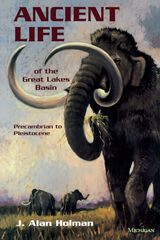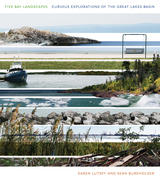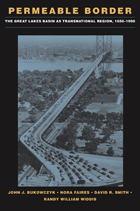
Ancient Life of the Great Lakes Basin provides a one-of-a- kind look at ancient life in the Great Lakes. Written for the layperson and for the professional with biological or geological interest in the Great Lakes region, the book describes most of the common fossils found in this region. Detailed illustrations help identify many of the fossilized organisms that can be found today. Among the most interesting illustrations presented in the book are Gijsbert van Frankenhuyzen's conceptions of what the fossilized creatures may have looked like when they were alive. In addition, color illustrations by van Frankenhuyzen depict spectacular scenes of ancient life in the Great Lakes area.

Threatened by issues of environmental health, climate change, population growth, and industrial demands, the coastal zone of the Great Lakes reflects an increasingly dysfunctional relationship between the people of the basin and the resources that support them. Perhaps no place is the physical manifestation of this struggle more evident than in the basin’s shallow bays. While many regional and local responses to these issues focus on methods of control, Five Bay Landscapes argues that responses should begin with critical, experiential, and pluralistic understandings of place. Through a series of five narratives, each located on a bay within the Great Lakes, the authors share their practice of curious site explorations. These explorations, both written and visual, consider the nuances and systems of these shorelines along with the lessons these findings might offer for future design and planning interventions. Using the Great Lakes as a context, Five Bay Landscapes illuminates a dynamic and robust landscape system and establishes a series of methods for understanding, analyzing, and intervening within the changing landscape.

From the colonial era of waterborne transport, through nineteenth-century changes in transportation and communication, to globalization, the history of the Great Lakes Basin has been shaped by the people, goods, and capital crossing and recrossing the U.S.-Canadian border.
During the past three centuries, the region has been buffeted by efforts to benefit from or defeat economic and political integration and by the politics of imposing, tightening, or relaxing the bisecting international border. Where tariff policy was used in the early national period to open the border for agricultural goods, growing protectionism in both countries transformed the border into a bulwark against foreign competition after the 1860s. In the twentieth century, labor migration followed by multinational corporations fundamentally altered the customary pairing of capital and nation to that of capital versus nation, challenging the concept of international borders as key factors in national development.
In tracing the economic development of the Great Lakes Basin as borderland and as transnational region, the authors of Permeable Border have provided a regional history that transcends national borders and makes vital connections between two national histories that are too often studied as wholly separate.
READERS
Browse our collection.
PUBLISHERS
See BiblioVault's publisher services.
STUDENT SERVICES
Files for college accessibility offices.
UChicago Accessibility Resources
home | accessibility | search | about | contact us
BiblioVault ® 2001 - 2024
The University of Chicago Press









